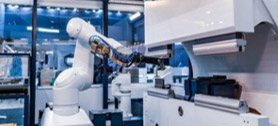
MOM (Manufacturing Operation Management) is translated into Chinese as "manufacturing operation management". This concept was first established in the ISA-95 standard issued by the Instrumentation, System, and Automation Society (ISA) in 2000. Concept, the standard demarcates the boundaries of manufacturing operation management in a broader sense, as a general research object and content in this field, and constructs a general activity model to be applied to the four main operation areas of production, maintenance, quality and inventory, and defines in detail various Functions of the operating system and the interrelationships between functional modules.



MOM Manufacturing Operations Management aggregates massive amounts of data from control, automation, and data acquisition systems and converts it into useful information about manufacturing operations. By combining automation data with data from employees and other processes, MOM Manufacturing Operations Management provides a more complete, real-time view of all factories and the entire supply chain.
The MOM system integrates subsystem modules such as production planning management, production equipment management, production process management, production quality management, material and product traceability management, manufacturing resource management, kanban and visual display, and integrates the human, machine, material, Production factors such as law, environment and testing are organically combined